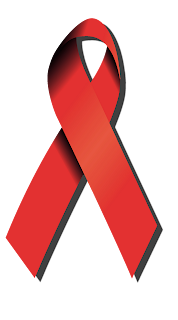 There are some basic facts that we all should know about AIDS.
There are some basic facts that we all should know about AIDS.HIV stands for Human Immunodeficiency Virus. This is the virus that causes AIDS. HIV is different from most other viruses because it attacks the immune system. The immune system gives our bodies the ability to fight infections. HIV finds and destroys a type of white blood cell (T cells or CD4 cells) that the immune system must have to fight disease.
For many years scientists theorized as to the origins of HIV and how it appeared in the human population, most believing that HIV originated in other primates. Then in 1999, an international team of researchers reported that they had discovered the origins of HIV-1, the predominant strain of HIV in the developed world. A subspecies of chimpanzees native to west equatorial Africa had been identified as the original source of the virus. The researchers believe that HIV-1 was introduced into the human population when hunters became exposed to infected blood.
AIDS stands for Acquired Immunodeficiency Syndrome. AIDS is the final stage of HIV infection. It can take years for a person infected with HIV, even without treatment, to reach this stage. Having AIDS means that the virus has weakened the immune system to the point at which the body has a difficult time fighting infections. When someone has one or more of these infections and a low number of T cells, he or she has.
HIV is passed from one person to another by:
- having sex (vaginal, anal, or oral) with a person who has HIV without using condoms or other latex barriers
- sharing needles with a drug user who has HIV
- during pregnancy, birth, or breast-feeding if a mother has HIV
- getting a blood transfusion from a person with HIV
HIV cannot be transmitted by casual contact. Here are the facts:
- You cannot get HIV from shaking hands or hugging a person with HIV/AIDS
- You cannot get HIV from using a public telephone, drinking fountain, restroom, swimming pool, Jacuzzi, or hot tub
- You cannot get HIV from sharing a drink
- You cannot get HIV from being coughed or sneezed on by a person with HIV/AIDS
- You cannot get HIV from giving blood
- You cannot get HIV from a mosquito bite
There is no cure for HIV and no vaccine to stop you from becoming infected. However, since the 1990s, treatments have been developed that enable most people with HIV to stay well and live relatively normal lives.
Don't think that this can't never happen to you because you don't belong to one of the risk groups, and don't discriminate people who have AIDS, they're just like you.
Watch this interesting video about AIDS:
http://www.youtube.com/watch?v=FRBflFVqFNI